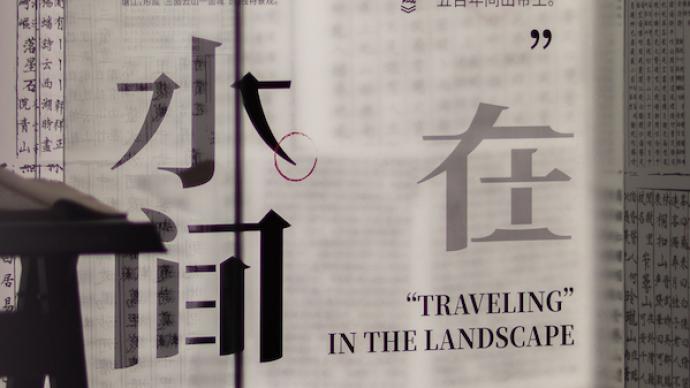
"The past of a city is like a person's memory. Archaeology is one of the important means to explore the relationship between Lin'an City and modern Hangzhou in the Southern Song Dynasty. It allows us to truly feel the physical remains of the Southern Song Dynasty. Although the archaeological remains present are The fragmented and incomplete Lin'an City, but through our splicing and restoration, its appearance is gradually becoming clearer." said Wang Zhengyu, deputy director of the Hangzhou Institute of Cultural Relics and Archaeology.
"Walking Between Landscapes - Hangzhou Lin'an City from the Perspective of the Southern Song Dynasty" is being exhibited at the Hangzhou Museum these days. This exhibition is jointly curated by the Hangzhou Museum and the Hangzhou Institute of Cultural Relics and Archaeology. The main line is to organize a total of 311 sets (1080 pieces) of cultural relics in bronze, calligraphy and painting, gold and silver, and ceramics collected by 21 cultural and museum units across the country, showing the social customs and cultural image of Hangzhou city more than 800 years ago. Wang Zhengyu, the curator of this exhibition, recently accepted an exclusive interview with The Paper: Ancient Art. 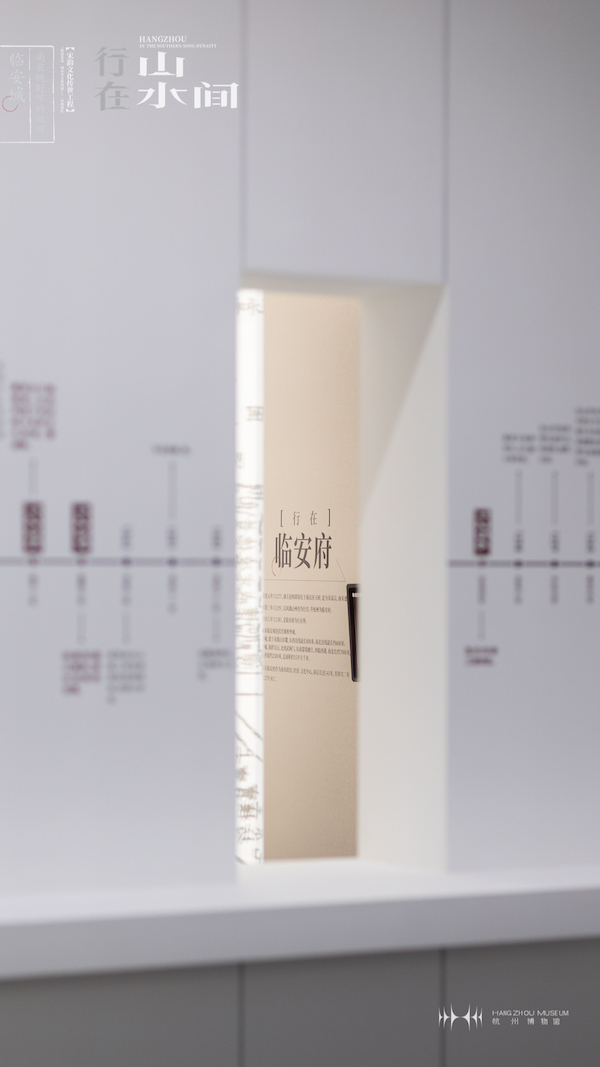
"Walking Between Landscapes - Hangzhou Lin'an City from the Perspective of the Southern Song Dynasty" exhibition site
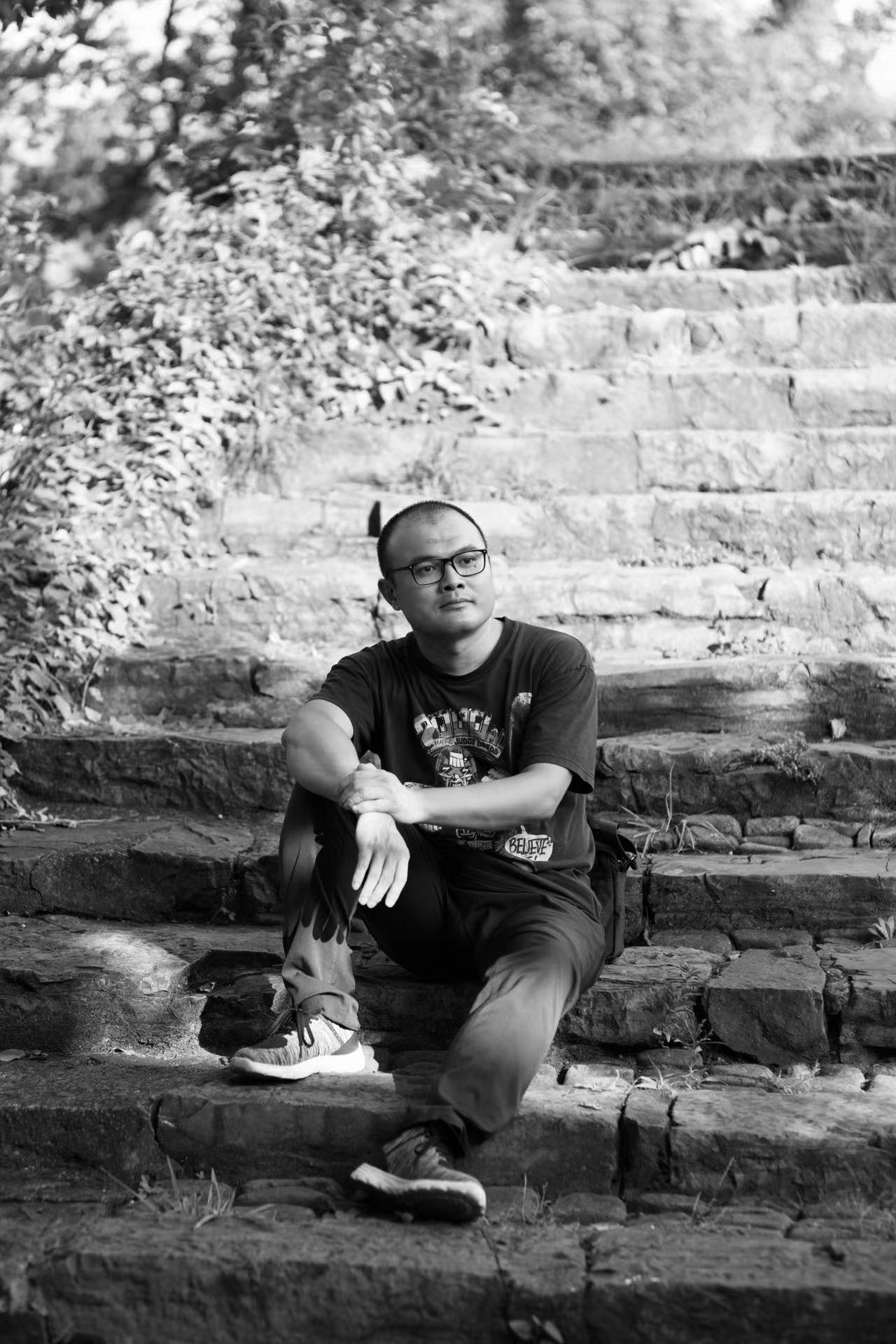
The curator of the exhibition, Wang Zhengyu, deputy director of the Hangzhou Institute of Cultural Relics and Archaeology
Wang Zhengyu believes that a city has its humanistic spirit, its material qualities, and its historical heritage. Just like a person, he has warmth, memory, and character.
The early history of Hangzhou can be regarded as a history of the changes of mountain settlements: from north to south, from Yuhang to Hangzhou, and then from west to east, from the deep mountains west of the West Lake to the low hills in the east of the lake, the city was built on the Phoenix Mountain, until the Southern Song Dynasty. It developed into the capital of Lin'an. The northwest and southwest of Lin'an City are low mountain and hilly areas in western Zhejiang, the northeast and southeast belong to the northern Zhejiang plain, the west of the city is leaning on the West Lake, and the southeast is adjacent to the Qiantang River, forming a unique landscape of "three sides of clouds and mountains and one city", which is a typical representative of a city with mountains and rivers. .
As the former "Ancient Capital of the Southern Song Dynasty", Hangzhou has profound "Song Yun" genes. 
"Walking Between Landscapes - Hangzhou Lin'an City from the Perspective of the Southern Song Dynasty" exhibition site
The second floor of the exhibition hall starts from the city wall, displaying archaeological discoveries from the imperial city to the ritual buildings, the central government office, the imperial street to the official residence and public facilities, supplemented by historical documents and modern interpretations, showing the urban layout and functions of Lin'an City. Taking mountains, lakes, rivers and seas as the context, it displays the characteristics of Lin'an City as a typical southern landscape city, and "reproduces" the history related to Hangzhou City from the perspective of the Southern Song Dynasty.
On the third floor of the exhibition hall, the highlights of Southern Song art and culture, such as scholar-officials, commodity economy and secular life, aesthetics, and overseas trade, lay out today's imagination of the living conditions and spiritual world of Lin'an city people. 
"Walking Between Landscapes - Hangzhou Lin'an City from the Perspective of the Southern Song Dynasty" exhibition site
"This exhibition, we are working hard in the direction of making it easier for visitors to understand the exhibition. To see this exhibition, I suggest that you can first take a look at the curatorial statement we have prepared for you at the two ends of the exhibition; you can look at Jiang Cun From the Southern Song Dynasty coins unearthed in ancient coin cellars, you can roughly understand the changes in the era names; you can stop to watch and compare the ancient and modern maps prepared for everyone, and discover the changes in the layout of the city." Wang Zhengyu accepted "The Paper: Ancient Art" Introduced in the interview.
Dialogue | Curator Wang Zhengyu, Deputy Director of Hangzhou Institute of Cultural Relics and Archaeology
Surging News: "Walking in the mountains and rivers - Hangzhou Lin'an City from the perspective of the Southern Song Dynasty" is currently on display at the Hangzhou Museum. This is a rare boutique exhibition recently opened to show the theme of the city's history. Tell us about the origin of the exhibition and what kind of process did you go through? Why is the title "Walking in the Landscape"?
Wang Zhengyu: Zhejiang attaches great importance to the research and inheritance of "Song Yun" culture. As one of the important connotations of "Song Yun" culture, Lin'an City should also play its due role. Over the years, we have been carrying out archaeological work on the site of Lin'an City in the Southern Song Dynasty, including important sites such as Deokshou Palace, and have also achieved many new achievements. In the 1980s, archaeologists headed by the famous archaeologist Xu Pingfang formed the Southern Song Dynasty Lin'an City Archaeological Team and began to systematically carry out archaeological work on this capital during the Southern Song Dynasty. Fruitful results have also been achieved. Therefore, we would like to present the archaeological discoveries related to Lin'an City and its surrounding areas to everyone in a simple way, and show them to the audience in the form of museum exhibitions, so that the cultural relics can play their due social functions, and pave the way for the Asian Games to be held in Hangzhou. With the wisdom of our archaeologists and cultural bloggers, we can tell our Hangzhou story to friends in Asia and the world.
The rich accumulation of archaeological materials is the basis for holding this exhibition. The holding of the Asian Games in Hangzhou and the better presentation of Hangzhou's "Song Yun" to the world are the initial motivation for us to hold this exhibition. The biggest support for this exhibition. 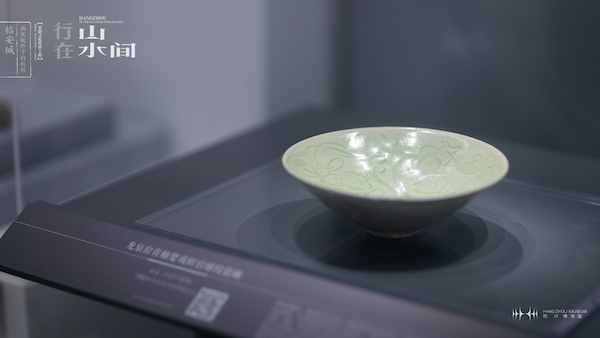
Celadon exhibited at the scene of "Walking Between Landscapes - Hangzhou Lin'an City from the Perspective of the Southern Song Dynasty"
I think a city has its humanistic spirit, its material qualities, and its historical heritage. Just like a person, he has warmth, memory, and character. I think these seemingly metaphysical things are exactly the characteristics of the city that we should feel. In addition, the Hangzhou Institute of Cultural Relics and Archaeology and the Hangzhou Museum both take it as their responsibility to base themselves on Hangzhou and to deeply cultivate the city's history and culture. It is naturally our responsibility to organize such an exhibition with the theme of displaying the city's history.
I think the team of Deputy Director Xu Xiaoxiao of Hangzhou Museum has the most say in the preparation of the exhibition. The idea of multi-line display of the positive and negative time axis they put forward is a very good and cutting-edge concept. The repeated running-in of the archaeological team and the exhibition team has promoted and deepened our understanding and practice of how to better integrate and unify the objective interpretation of archaeological objects and the subjective feelings of visiting individuals, and the effect needs to be tested by the audience. 
"Walking Between Landscapes - Hangzhou Lin'an City from the Perspective of the Southern Song Dynasty" exhibition site
Now we basically think that, in the eighth year of Shaoxing (1138) in the Southern Song Dynasty, the capital was Lin'an (now Hangzhou), but the city of Lin'an in the Southern Song Dynasty was not called "capital" at first, but "Xingzai" or "Xingzai". one. This city is backed by mountains and waters, leaning on rivers and lakes. It is a typical landscape city in the south. In today's words, it is a city between green mountains and green waters. This is the second. The curatorial team of Hangzhou Museum skillfully superimposed the two to form the title of "walking between mountains and rivers".
The Paper: This exhibition brings together a total of 311 sets (1,080 pieces) of cultural relics collected by 21 cultural and museum units across the country, including the Palace Museum, the Guangdong Provincial Institute of Cultural Relics and Archaeology, the Luoyang Museum, and the Suzhou Museum. The social customs and cultural image of Hangzhou city. Could you please talk about the considerations in the selection of cultural relics from so many cultural and museum units?
Wang Zhengyu: Curator Xu has the best answer to this question. This is what I think about it. Although Lin'an City is the core cultural heritage of Hangzhou, its connotation surpasses Hangzhou in space because it was the capital of a dynasty in the Southern Song Dynasty. It connected the north and the south through canals and connected the world through the Maritime Silk Road. Therefore, we need the relics from the Nanhai No. 1 shipwreck of the Guangdong Provincial Institute of Cultural Relics and Archaeology, and the imitation bronze ritual vessels of the Southern Song Dynasty from the Palace Museum. 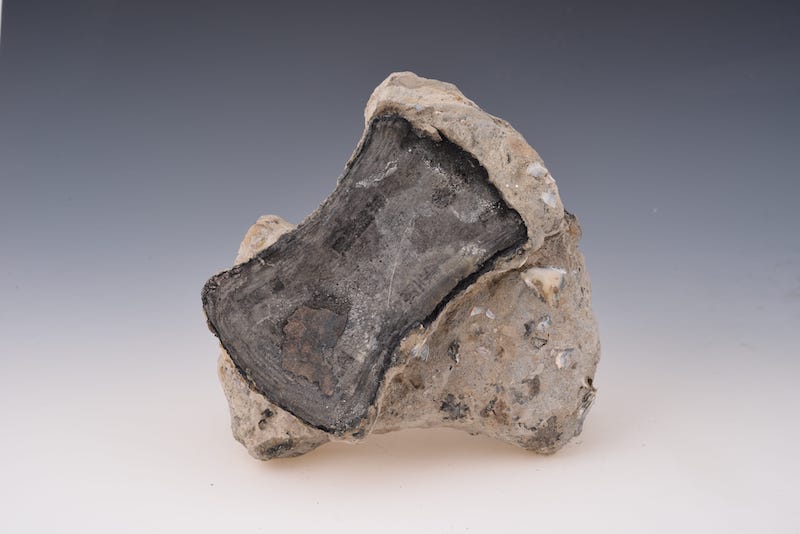
Silver collar condensate, Southern Song Dynasty (1127-1279) "Nanhai No. 1" shipwreck emerges from the water, in the collection of Guangdong Provincial Institute of Archaeology
The Paper: Through historical relics and relics, we can start a "re-imagination" of Lin'an City, but the historical Lin'an City no longer exists, how do we know the scale of Lin'an City's buildings? Are there any discrepancies between archaeological findings and documentary records? What does clarifying urban boundaries mean to us?
Wang Zhengyu: Archaeologists often talk about "seeing people through objects", hoping to see the people and things behind it through the physical remains unearthed by archaeology. In fact, when people today see the unearthed relics and relics related to Lin'an City, the "re-imagination" unfolding in their hearts may be the same as "a thousand people have a thousand Hamlets in their hearts", and each has its own "Lin'an City". 
Block Edition "Xianchun Lin'an Chronicles", Volume 26, Loose Pages, Southern Song Dynasty (1127-1279) Collection of Zhejiang Library Exhibition Period: August 27, 2022 - October 24, 2022
The local chronicle "Xianchun Lin'an Zhi" in the Southern Song Dynasty left us ancient maps such as "Map of the Capital City" and "Map of the Imperial City". If we compare it with the "Map of Zhejiang Province City" and "The Latest Measured Map of Hangzhou City Street" in the Qing Dynasty, It can restore a large part of the pattern of the city walls, streets and rivers of Lin'an City in the Southern Song Dynasty.
Through the experience and understanding of the archaeological exploration and excavation results of Qiantang Gate and the east city wall of Lin'an City, we can "re-imagine" the image of the city gate corresponding to the pier foundation and its doorway relics, and the construction system of the moat village corresponding to the city wall foundation.
The many discoveries and revelations of the Southern Song Dynasty Royal Street buried under Zhongshan Road have witnessed the evolution of the Royal Street from brick to stone, and also let you see the shape of the narrow and long bricks called "fragrant cake bricks" by Hangzhou people. This kind of brick was widely used in Lin'an City in the Southern Song Dynasty. In addition to paving roads, it can also be used to pave scattered water, courtyard floors, and four walls of platform foundations. It can also be used to weave various patterns. ”, the ordinary bricks, through the “weaving” produced the beauty.
Seeing the courtyard-style foundations, pools, rockeries, etc. of Empress Yang's house, you can "re-imagin" a high-level garden located in the Empress's Temple and the Queen's Mansion. 
Documents and materials exhibited at the scene of "Walking Between Landscapes - Hangzhou Lin'an City from the Perspective of the Southern Song Dynasty"
The chronological sequence we obtained by combing through the literature and the early and late relationship determined by archaeological excavations often only basically correspond, and rarely fully match. The reason for this has a lot to do with the lack of records or ambiguity in the literature.
I think the significance of clarifying the distribution boundary of ancient urban remains is that we can protect it more precisely.
Peng Mei News: Why was a large number of building bricks such as fragrant cake bricks found in the ruins of the Song Dynasty? What are its advantages? Are you presenting in this exhibition?
Wang Zhengyu: Fragrant cake brick is actually a kind of narrow and long gray brick. It is named because it resembles a kind of Jiangnan pastry, which is made of rice and dried. This kind of brick is common in the archaeological excavations of Lin'an City and its surrounding city sites and tombs in the Southern Song Dynasty. It has a wide range of uses. It can be used to pave roads, courtyard floors, build scattered water, four walls of platform foundations, pool walls, ditch walls, flower beds and even masonry. Build a tomb. Because of its wide range of uses, it is also often found in ruins. Because this brick has received a lot of attention, it may make people feel that its discovery must also be large. In fact, in addition to fragrant cake bricks, there are also many discoveries of rectangular and square bricks of other sizes. The size of the bricks used is closely related to the type, scale and function of the building. For example, the indoor paving of higher-grade buildings is often Use square bricks, the walls of the yard are mostly built with rectangular bricks, and so on. 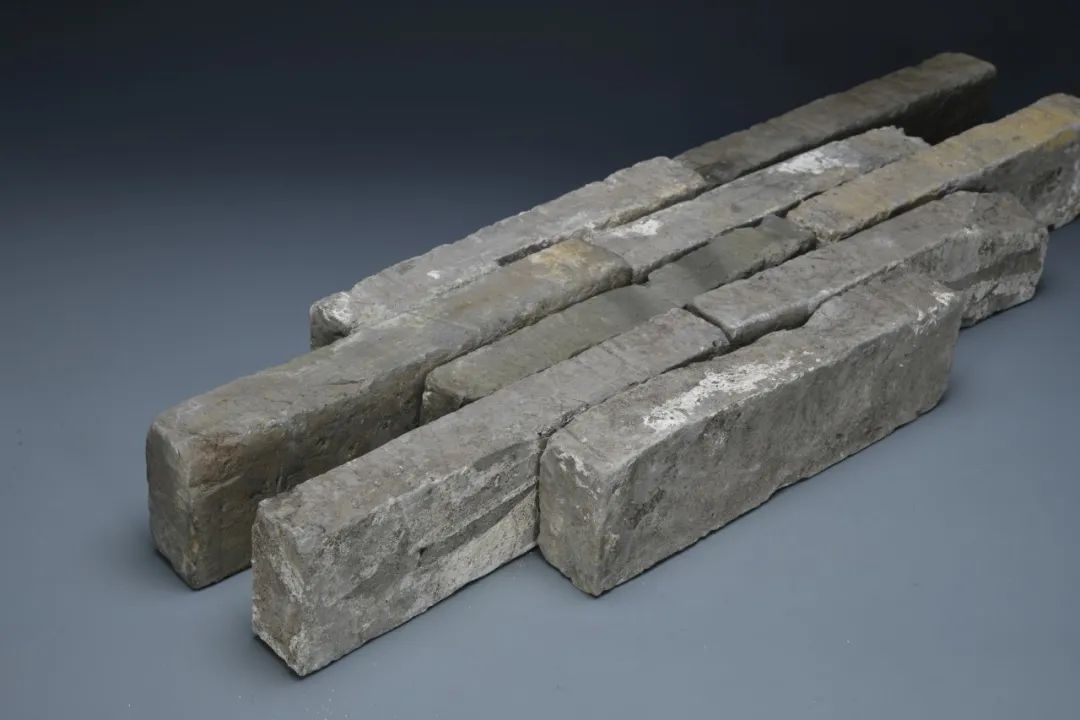
Fragrant cake brick, Southern Song Dynasty (1127-1279) Unearthed from the ruins of Yujie in the Southern Song Dynasty
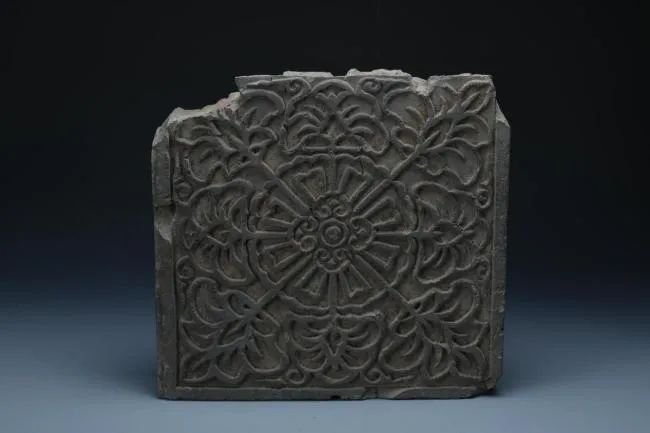
Song Baoxiang flower floor tiles Unearthed from the Southern Song Dynasty Lin'an Fuzhi Ruins in Hehuachitou, Shangcheng District, Hangzhou in 2000, provided by Hangzhou Institute of Cultural Relics and Archaeology
Fragrant cake tiles are also concentrated in the chapters related to the Southern Song Dynasty Royal Street in this exhibition.
The Paper: Compared with the results of archaeological excavations in the city of Jin Guo during the same period, what are the characteristics of the cultural relics unearthed in Lin'an City in the Southern Song Dynasty? Are there more remains of the Northern Song Dynasty in Lin'an City than those unearthed in the Southern Song Dynasty?
Wang Zhengyu: A series of archaeological work has been carried out in the Jinshangjingcheng, Jinzhongdu, Jin Dynasty BMW City, and the ruins of Prince City. In contrast, Lin'an City in the Southern Song Dynasty is a very typical site of overlapping ancient and modern cities. Hangzhou City in the Sui and Tang Dynasties overlapped with Qiantang County, the West House of the Wuyue Kingdom of the Five Dynasties, Hangzhou in the Northern Song Dynasty, Lin'an City in the Southern Song Dynasty, and Hangzhou City in the Yuan, Ming and Qing Dynasties. Therefore, the cultural relics of these eras unearthed in the archaeology of Lin'an City are extremely rich, and the evolution relationship of each era is clear. The relics of the Northern Song Dynasty of the Five Dynasties in Lin'an City are not more than those of the Southern Song Dynasty. Judging from the current archaeological findings, the architectural relics unearthed in the Wuyue Kingdom period are usually larger in scale than those in the Southern Song Dynasty, and have a Tang Dynasty style.
The Paper: In this exhibition, if you are someone who has no knowledge of this history, which cultural relic would you recommend to start with?
Wang Zhengyu: In this exhibition, we are working hard to make it easier for visitors to understand the exhibition. To watch this exhibition, I suggest that you can first look at the curatorial presentations we have prepared for you at both ends of the exhibition; you can look at the Southern Song Dynasty coins unearthed from the Jiangcun ancient coin cellar to get a general understanding of the changes in the era; you can stop to watch and compare The ancient and modern maps prepared for everyone, from which to discover the changes in the layout of the city. 
"Walking Between Landscapes - Hangzhou Lin'an City from the Perspective of the Southern Song Dynasty" Coins on display
The Paper: Starting from the city where you live and work, how do you view the relationship between Lin'an City in the Southern Song Dynasty and modern Hangzhou? When studying Lin'an City, do you just regard it as a city of the past, or a city with deep emotions? Will the current understanding of Hangzhou City affect the understanding of Lin'an City, and how?
Wang Zhengyu: It should be said that the Southern Song Dynasty is very important to Hangzhou, but there are very few physical remains of the Southern Song Dynasty that we can see in Hangzhou today! The "overlapping of ancient and modern" mentioned above is a kind of relationship between Lin'an City in the Southern Song Dynasty and modern Hangzhou. Probably the formation of the modern Hangzhou dialect was largely influenced by the Mandarin in the Southern Song Dynasty. Archaeology is one of the important means to explore the relationship between Lin'an City and modern Hangzhou in the Southern Song Dynasty. It can make us truly feel the physical remains of the Southern Song Dynasty. Although the archaeological remains show the fragmented and incomplete Lin'an City, its appearance is gradually becoming clearer through our splicing and restoration. The relationship between Lin'an City and its surrounding cities has become increasingly clear through our work over the years. The archaeological discoveries of Gyeonggi county sites such as Yuhang County, Xincheng County (now Xindeng), and Lin'an County have given us a better understanding of the two-level urban system of Lin'an Prefecture. a deeper understanding. 
"Walking Between Landscapes - Hangzhou Lin'an City from the Perspective of the Southern Song Dynasty" exhibition site
A city's past is like a person's memory. We can reminisce about the past, we can also look at the written records left in the past years, and we can see things and people. Perhaps the physical remains presented through archaeological work, today we see it again, give people a feeling like "seeing things and thinking about people", I think this emotion must come from the bottom of my heart. 
"Walking Between Landscapes - Hangzhou Lin'an City from the Perspective of the Southern Song Dynasty" exhibition site
Today's Hangzhou is changing with each passing day, and the scale of the city is not comparable to that of the past. The former Lin'an City has been buried deep underground, and the preserved old streets and rivers may still bring us some memories of Lin'an City in the Southern Song Dynasty. Some understanding of the current formation of Hangzhou City may have little impact on our understanding of Lin'an City.